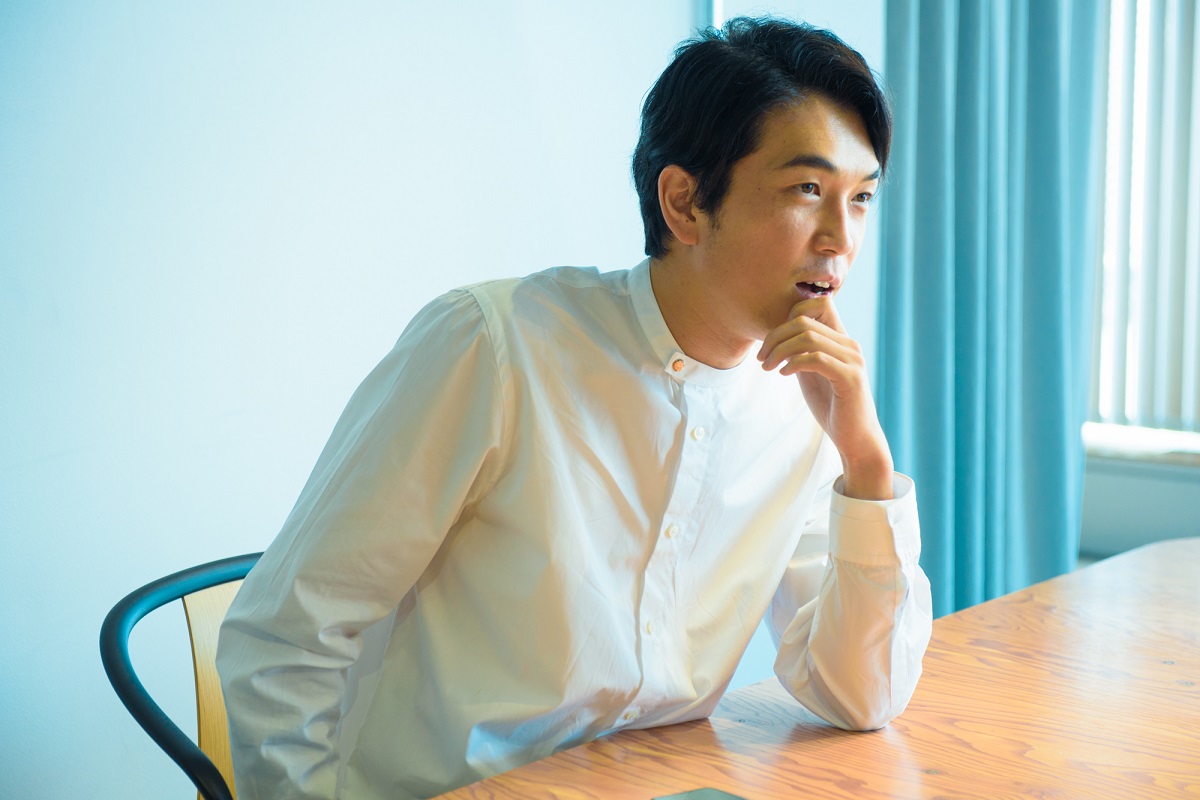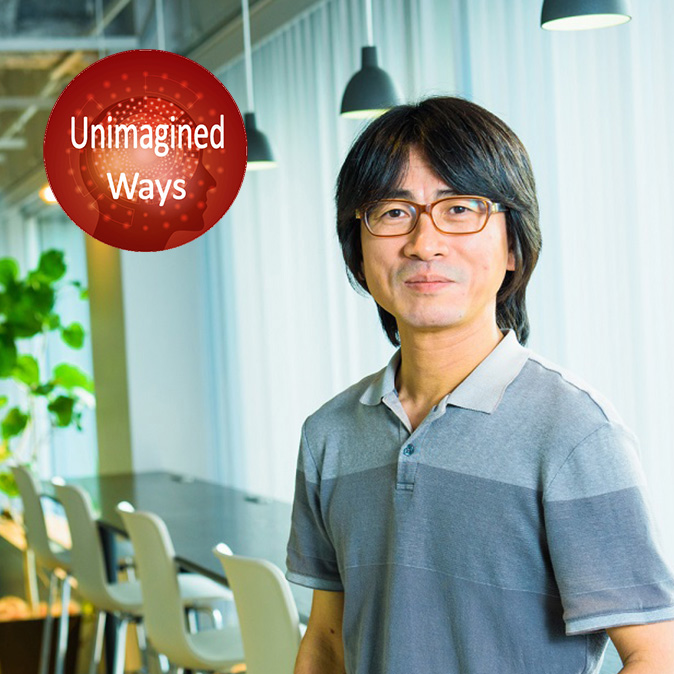- Viewpoints
SEEDATA Inc. Representative Hiroyuki Miyai discusses “tribe research,” an Unimagined Way that was born of action spurred by righteous indignation.

Hakuhodo’s creativity has the power to produce Unimagined Ways. In this series of interviews, we ask Hakuhodo Group people who have used creativity to produce and implement Unimagined Ways about the moment their Unimagined Way was born. In this sixth article in the series, we talk to Hiroyuki Miyai, Representative of SEEDATA Inc., a Hakuhodo DY Group in-house venture company.

A feeling of mottainai was the spark
SEEDATA was established in October 2015 and is now in its fourth year. Your employees are growing nicely and your business expanding. Firstly, could you tell us what spurred you to establish the company?
I started the business utilizing the Hakuhodo DY Group’s in-house venture program, AD+VENTURE. At the time, I was involved in strategic planning and consulting work at Hakuhodo. This involved a lot of research work. Conducting studies for a particular client, analyzing the results in detail and writing up reports for that client day in day out, I always felt a sense of regret at the wastefulness of it, this feeling best described by the Japanese word “mottainai.” For instance, I felt strongly that a survey I’d done for a certain client three months earlier could actually also be used by this current client. I thought that if survey data and insights could be utilized by multiple companies rather than just one, there would surely be various benefits, such as in price and the time to completion.
This led me to believe that undertaking surveys by ourselves in advance then providing them broadly at a low cost would be a good way of realizing this.
You could call this concept an Unimagined Way for research, but how were you able to break free from the conventional wisdom at the time? Did you get various kinds of reaction along the way to establishing the business?
Initially, there was some internal resistance to the business plan. I was told that research should be conducted only after receiving an order and the purpose from the client, and it was suggested to me that “doing research in advance” was not the right way to go about it. It is a basic rule in the industry that research, particularly qualitative research, is order made to address a client’s challenges, and no one questioned that understanding.
But in addition to feeling that this was mottainai, I was also certain that instead of doing one survey at a cost of 1 million yen, trying 10 different surveys costing 100,000 yen each was a better way to go. When developing a new product or service, you don’t know which idea is going to be a hit, so it’s better to try as many as possible. You can’t try lots of order-made surveys where costs add up, but using our research, you can verify several times the number of possibilities.
Previously, when interviewing successful entrepreneurs when I was working on a book called Nikai ijō, kigyō shite seikō shiteiru hitotachi no seorii [Theories of people who have successfully started at least two companies] (ASCII Shinsho, 2013), I learned the importance of a stance that they shared: “we don’t know the future, so we set things up for ourselves so that we’ll be alright whatever happens.” It is this that gave me that certainty.
It’s better to have lots of balls ready for a future we cannot predict.
How, specifically, did you get past this feedback?
This is something that goes any time you establish any new in-house business, but the person who wants to set up the business needs to carefully explain what it is they’re trying to do. I, too, went in with the stance that I would keep communicating the idea until it got through, and I went to talk to lots of people in the six months leading up to the start of the business.
Aside from my own motivations, I also explained the idea from the perspective of “reading the trajectory of the times.” I call the year 2015, when SEEDATA was founded, the first year of open innovation. These days the phrase “open innovation” is bandied about freely, but if you search for “open innovation” on Google Trends, you’ll see that the number of searches for the term doubled in 2015. By making research and insights open and sharable, clients with the same interests can link up, potentially leading to opportunities for collaboration. That’s why we do it.

There’s nothing more interesting than talking to tribes
SEEDATA was incorporated with “tribe research” as its core business. Can you tell us about the content of this business?
We refer to groups of early adopter consumers who have already realized the values and behaviors that look set to become the norm in around five years’ time—that is, the bleeding edge—as a “tribe,” and it is these people that are the subject of our research. More particularly, the business involves identifying new tribes, conducting qualitative surveys, or “tribe research,” on them to understand their behaviors and perceptions, and putting together “tribe reports” of insights we gain from this research, which is what we provide to clients.
Our reports are not simply the results of the research, but contain future insights from SEEDATA analysts. Furthermore, one of our strengths is that we go as far as providing hints for business opportunities that could potentially arise from the tribes. We also record raw data in the form of interviews with individual members of the tribes, so users are also able to conduct their own analysis.
By using our tribe reports, marketers can cut the time and cost of designing order-made surveys from scratch.
When you first started the business, you had a list of some 200 tribes, covering such varied areas as fashion, food and health. Your initial TRIBE List has tribes such as “Mixed Channelers,” “Fun Runners” and “Doctorsumers.” Your tribe names are a bit quirky, like something out of a magazine.
Magazines’ tribe names are intended for a general audience, but SEEDATA’s tribes have business use (to B) phrasing. They’re intended to spark ideas for business opportunities in readers’ minds. We also do our best to include the names of the services the tribes use in their tribe names.
Incidentally, 20 or 30 of us currently publish around 20 reports a year, but when we first started my co-founder, Yohei Fujii, and I were losing our minds creating one report a week with just the two of us. That’s one week including doing the research. That was tough [smiles wryly].

Did any of the tribes on your list when you first started leave a special impression?
One would be our fourth report on Non-Love Tinderers. Apps like Tinder and Pairs were primarily being used to find love, but at the time, some users had started using them not for love, but to find someone to teach them yoga, English or the like. We named those users—that tribe—Non-Love Tinderers, researched them, analyzed their mode of life and wrote up a report.
What this tribe indicated was that while previously TOEIC scores and such “specs” were the criteria used when looking for an English teacher, the portents of “right-brain matching” had emerged, with users looking at photos of potential teachers’ homes and lives to find someone whose lifestyle look appealed to them.
That portent would go on to become a trend that has since spread to all kinds of industries, from real estate to employment agencies, but the buds of it were there four years ago on Tinder.
SEEDATA’s tribes continue to grow in number. You currently have 290 available?
If you ask me whether all 290 will be as on the button as Non-Love Tinderers was, my answer is, “Who knows?” But in an uncertain world, I believe we need to give things we think will grow a go as much as possible.
Previously, when creating a report on new-style agronomists, I went on the road to interview subjects and put in a lot of work, creating two reports, but in three years, didn’t sell even one report. Then three years on, they were suddenly selling like hotcakes and customers were saying, “I didn’t know you had reports like this.” The reason the reports weren’t selling, I think, is that they were just too far ahead of their time.
 SEEDATA’s TRIBE List
SEEDATA’s TRIBE ListConstantly looking for this many tribes must take a lot of perseverance
Having started our business, we intend to know sei-katsu-sha better than anyone in the world. We don’t just look for tribes in Japan, but all round the world. Whenever we hear news about someone really interesting, just passing that news on is not enough; we use social media and the like to find the person and go and meet them. If we find out that they’re in the US, we go to the US to meet them.
I just love tribes. Since I was a student, I’ve always thought that consumers are interesting; but cutting-edge tribes, there’s nothing more interesting than listening to what they have to say. I love that so much that I want to make it my life’s work. A bunch of us that think this way have come together at SEEDATA. Tribes are our obsession [laughs].
The two requirements for coming up with an Unimagined Way
SEEDATA is about to enter its fifth year. How has it changed since its establishment?
Today, tribe research is still our core business. Beyond that, what we offer is moving closer toward supporting companies to innovate.
To illustrate how tribe perspectives lead to innovation, an example from the manufacturing industry is illuminating. Let’s say there was a camera popular with travelers. Traditionally, its marketing revolved around researching travelers and improving the functions that travelers want. Doing so, the functions that would be improved would basically always be the same parts. But when they moved away from existing users for a moment and viewed things from surfers’ perspectives, they found hints for new functions that needed to be improved in the extreme needs of surfers who want to take photos in an environment with unusual camera shake—such as stability in situations with unusual shaking.
Selling the innovative cameras that came out of this process not to surfers but to travelers, the original users, is the task of our Tribe-Driven Marketing.

You look set to come up with more and more Unimagined Ways with your tribe thinking
When I learned about this interview, I analyzed and had a think about what you need to do to come up with Unimagined Ways. In terms of structure, I feel that two elements are essential—ensuring you have circumstances for coming up with an Unimagined Way, and realizing it with action.
The circumstances that led to the Unimagined Way in my case was a base of “righteous indignation.” Basically, a sense of justice. Anger at the present situation. When we established SEEDATA, the base of the idea was righteous indignation at how mottainai our then research method was.
It is not just me that has this indignation; most people who are serious about whatever they do feel it, I think. All innovators have this righteous indignation, too—it is what makes them work to fix something the feel isn’t quite right. Tribes that start new behaviors also have this righteous indignation.
The other thing I feel strongly about when it comes to Unimagined Ways is that they need an action. Just putting forth an idea is not enough; it needs to have a proper action. I think this is what “Way” means.
In my case, the action that realized the Unimagined Way was dépaysement. This is a French word that refers to the phenomenon whereby notions and values crumble when you put something in an unexpected place—somewhere you wouldn’t normally find it. Bringing tribe thinking into our clients’ business breaks down their values, and the thinking this arouses leads to innovation. It is this that I constantly aim toward.
So, the ability to implement things is important
Right. Besides identifying the problem and coming up with ideas, our focus on the ability to execute is one of Hakuhodo’s strengths as an advertising agency. Trying to deliver solutions based on actions is not a new challenge being undertaken by Hakuhodo employees alone. It is an attitude shared by successful entrepreneurs and people in all kinds of areas that are serious about whatever it is they are doing. It is also something that I want to do, too.
Turning back to SEEDATA, I always use the phrase “responsible planning.” Creating reports and business plans and pitching them are nothing but means. I want to keep on providing proposals that will actually be realized. Plans that if I was asked, “Would you do it if it was you?” I would be able to answer, “Absolutely, and I can do it.”

















